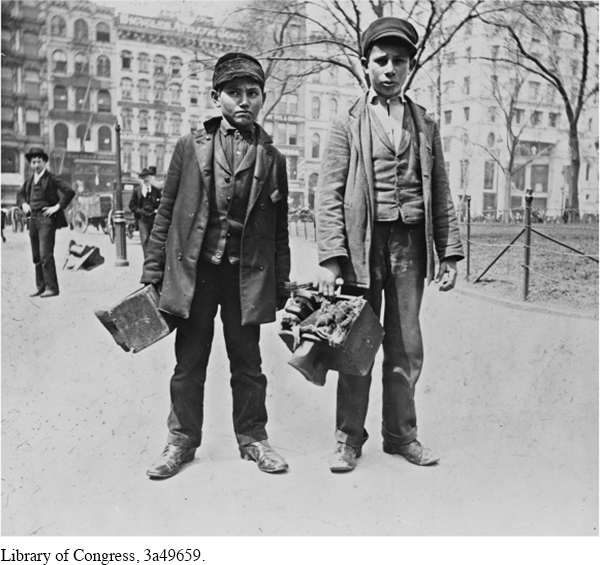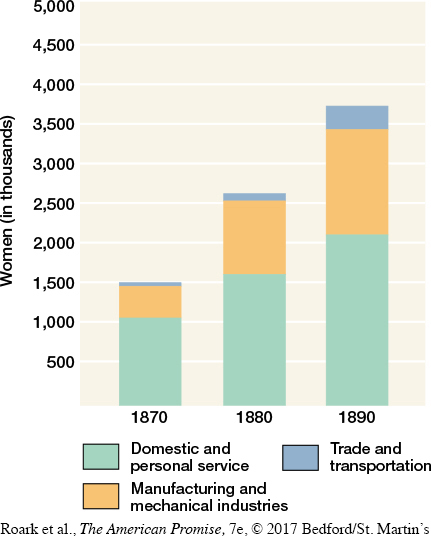The American Promise: Printed Page 538
The American Promise, Value Edition: Printed Page 495
The American Promise: A Concise History: Printed Page 561
The Family Economy: Women and Children
The American Promise: Printed Page 538
The American Promise, Value Edition: Printed Page 495
The American Promise: A Concise History: Printed Page 561
Page 538In 1900, the typical male worker in manufacturing earned $500 a year, about $12,000 in today’s dollars. Many working-


In the cities, boys as young as six years old plied their trades as bootblacks and newsboys. Often working under an adult contractor, these children earned as little as fifty cents a day. Many of them were homeless—
Child labor increased each decade after 1870. The percentage of children under fifteen engaged in paid labor did not drop until after World War I. The 1900 census estimated that 1,750,178 children ages ten to fifteen were employed, an increase of more than a million over thirty years. Children in this age range constituted more than 18 percent of the industrial labor force.
Women working for wages in nonagricultural occupations more than doubled in number between 1870 and 1900 (Figure 19.3). Yet white married women, even among the working class, rarely worked for wages outside the home. In 1890, only 3 percent were employed. Black women, married and unmarried, worked out of the home for wages in much greater numbers. The 1890 census showed that 25 percent of married African American women were employed, often as domestics in the houses of white families.